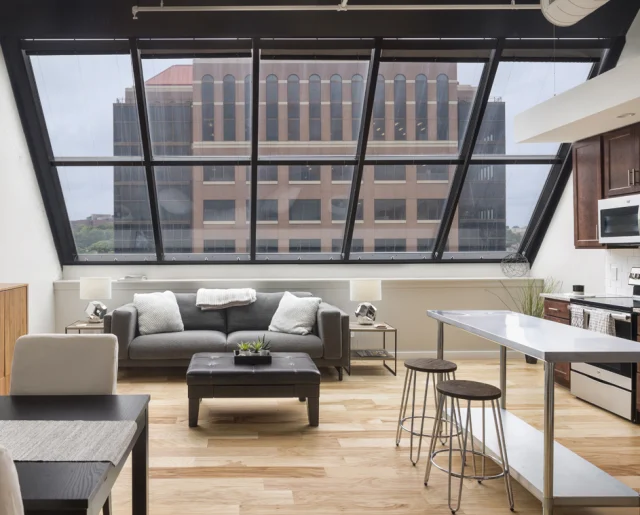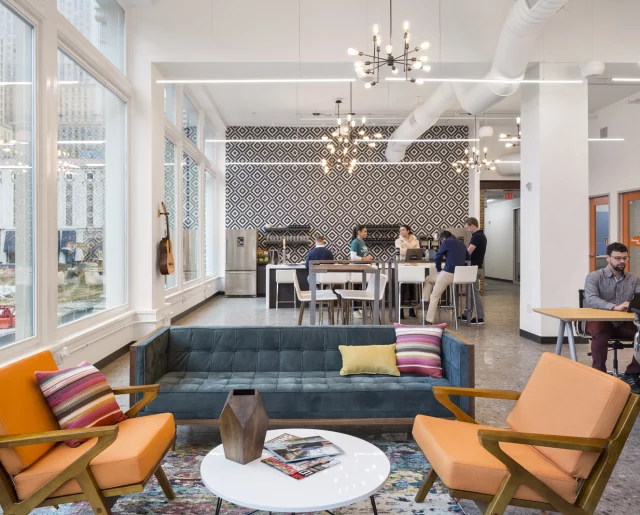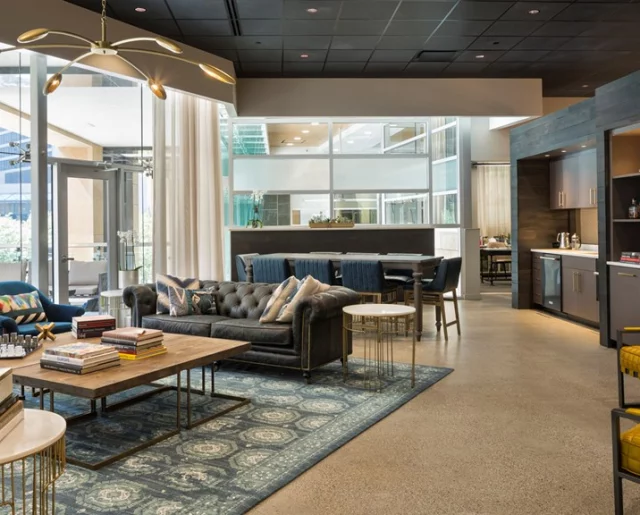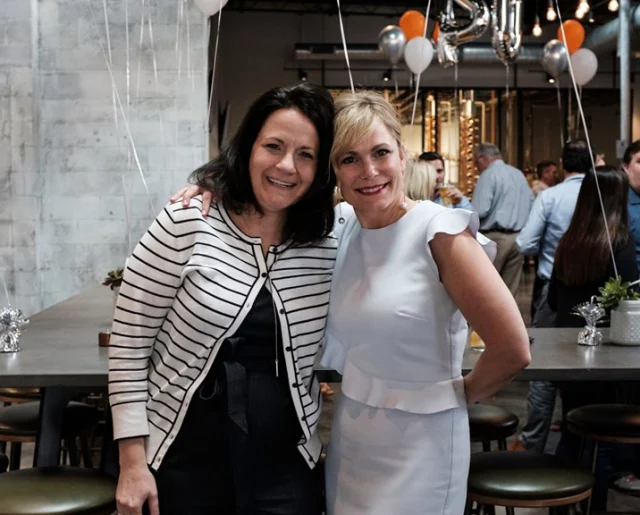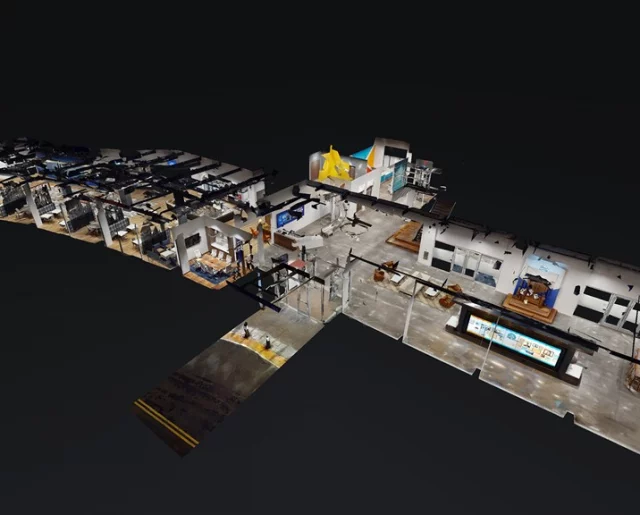How to Reenter The Workplace Successfully in Life Post-Pandemic
We are all inundated with thousands of articles about returning to the workplace – with a lot of considerations and concerns, and not a lot of solution-oriented strategies.
For key decision-makers, it’s incredibly overwhelming, and for staff, it’s incredibly important to try and understand what’s coming next, in a new unknown of the next evolution.
As experts in workplace design, and change management, we’ve created a list of the top three things you need to do to return to the office successfully – that come at zero cost to your company.

Remember, returning to the office is like a diet – if there was one solution that worked, everyone would be doing it. It’s time to focus inward, not outward, as you use these exclusive tips to create your customized strategy.
1. Communicate your “Why”, with compassion – and clarity.
The “Why” behind the “What” of returning to the office is the most important part of the conversation that’s shared with staff. Real success in this comes from vulnerable communication – being honest about the reasons why the return to office will support the success of your company. It’s also important to communicate with compassion, understanding this is a high-touch, emotional, transition for some employees, particularly those that gravitate towards introverted tendencies, or carry remaining fear of COVID.

The reasons for your company’s “Why” might be:
- Successful onboarding of new employees to support your company’s growth plan – without in-person opportunities it’s hard to develop meaningful relationships and genuine connections with new team members
- Fast Company shared, “Staring at a laptop screen with six other faces is inherently transactional, less spontaneous, and less human than working in an actual room with actual people.” Human connection and a sense of belonging requires human connection – and yes, in real life life will always create a deeper connection psychologically more quickly – it’s how humans are wired, and the way to best create community.
- Maintaining Company Culture and working towards a common vision, and company mission, matters. The longer we work apart from each other, the more being together matters. Sharing a space presents opportunities to be surrounded by other colleagues that share your company’s DNA, embodying the qualities of your organization’s core values and reminding each other of the best representation of each.
- Collaboration boosts innovation. Innovation isn’t something that you can just demand people provide in the moment. To truly foster innovation, companies have to create areas for free collaboration to happen. Stanford University recently reported that Collaborative work fuels intrinsic motivation driving people to stick with their tasks longer, have higher engagement, lower fatigue, and higher success rates compared to those expecting to work on their own.
- Efficiency and productivity numbers are boosted immediately, when people are able to access company resources, both digital and analog, with immediacy. Ramifications of remote work are being researched, with studies in nanotechnology by WGSN being reported, analyzing the long-term ramifications of our increasingly screen-based lives. Ramses Alcaide, CEO of Neurable, spoke about the largely brain-based side effects of remote work. His research found that distractions aided by technology, like notifications, “eat out our valuable attention and mental compositions throughout the day, exacerbating bad habits and leading to lapses in mental health”
2. Create a “Feedback Funnel”.
Surveys can be tired in today’s world of virtual fatigue, and while they can provide anonymity, they also lack human connection – a key driver for a successful workplace reentry strategy. Instead, opt for “Feedback Funnel” opportunities with your staff to provide in person platforms for conversation and considerations, based on the challenges and changes they’re dealing with.

Ideas for this include:
- 1:1 communication in a tiered model, with individuals meeting with their direct managers to cover a series of questions:
- What are your biggest stressors in returning to work?
- What are the ways the company can best support you?
- What are the ways you are most energized to contribute to the well-being of the company during this time of transition?
- Employee Engagement Initiatives – like:
- Lunchtime walking groups
- “Study Hall” sessions featuring in-house experts that can help mentor, or address, industry specific questions
- Corporate + Social Responsibility volunteer events that can be scheduled for lunch, or after work
- Small focus groups to allow an open forum for discussion and solution-oriented strategies
- HR “Open Office” Hours for questions and concerns
- A respite room to provide a space for individual decompression, imperative to support introverted employees as they transition back into a hyper-social environment in comparison to the isolation of WFH
3. The Well-Being of Your Company Relies on the Health of It All
Health isn’t exclusive to physical, and mental, attributions – it applies to financial, social, intellectual, and even spiritual components of your company. By making the well-being of your company a collective goal shared by all, with attention on an individual level, you’ll find your team championing for the same thing.
The segmentation of an employee is a thing of the past – and life post-pandemic will no longer recognize people as their professional life and their personal life. Instead, successful workplaces will recognize their employees as a whole human, creating a space for them to show up as their full selves.

For successful reentry, that means using the “Feedback Funnel” to see what most energizes employees about the way they can support the company, and where they feel most fulfilled in their workdays – and then creating opportunities for them to thrive.
It also means maintaining flexibility to provide the fluidity of the merge of work and life that we’ve become accustomed to in the last year. For MA, it means communicating expectations of being in the physical office for a portion of the week, while still providing opportunities for remote work and flexible hours, recognizing this evolution and adaptation.
As we move through this time, it’s important to remember that strategy is important, but execution is everything. Change management is a task that deserves prioritization and often manifests as a short-term investment for a long-term gain.
If you’re interested in learning more about the process of change management, return to work assimilation or how to best activate your space to facilitate success, feel free to reach out to me at carrieb@designwithma.com to continue the conversation. Together, we can figure out ways to turn your obstacles into opportunities.


